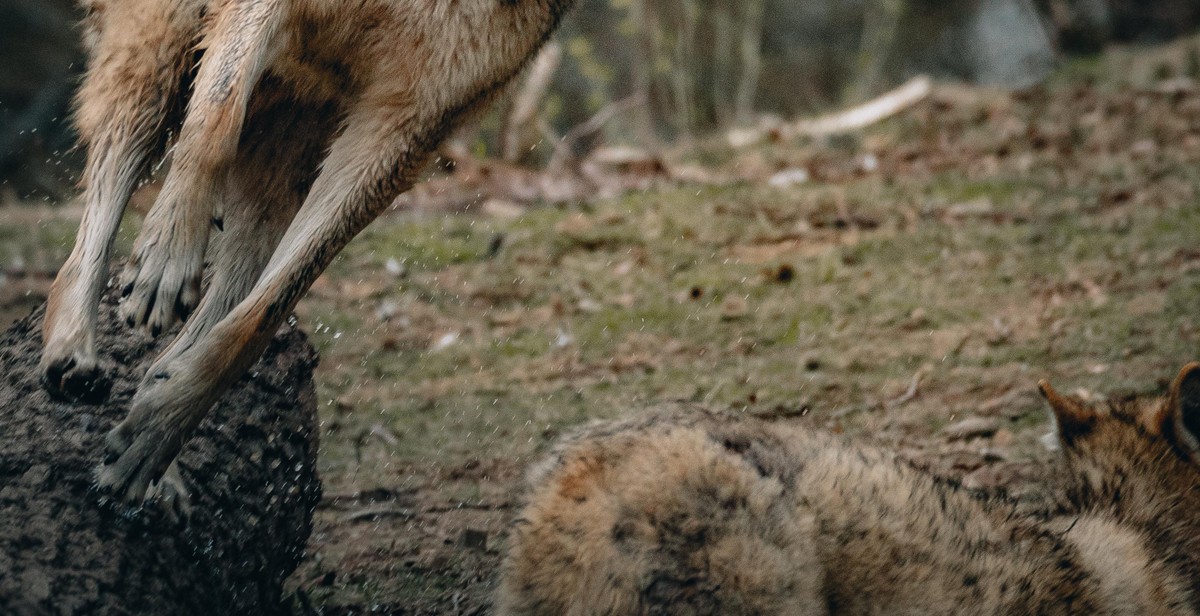How to Understand Animal Behavior: Observing and Interpreting Animal Actions
As humans, we have always been fascinated by the behavior of animals. From the way they interact with one another to their unique habits and instincts, animals have always been a source of wonder and amazement. Understanding animal behavior is not only fascinating but also crucial for their welfare and conservation.
Observing and interpreting animal actions can provide valuable insights into their behavior patterns, needs, and motivations. This article will provide an in-depth guide on how to understand animal behavior by using observation techniques and interpreting their actions.
We will explore the different factors that influence animal behavior, such as genetics, environment, and social interactions. We will also discuss the importance of interpreting animal body language, vocalizations, and other nonverbal cues.
Whether you are a wildlife enthusiast, a pet owner, or a researcher, understanding animal behavior is essential. By learning to observe and interpret animal actions, we can develop a deeper appreciation for the natural world and contribute to the conservation of our planet’s diverse fauna.

Why is Understanding Animal Behavior Important?
Understanding animal behavior is crucial for a variety of reasons. By observing and interpreting animal actions, we gain valuable insights into how animals think and behave, which can help us better care for them, protect them, and even improve our own lives.
Benefits of Understanding Animal Behavior
- Better animal welfare: Understanding animal behavior can help us provide better care for domesticated animals, such as pets and livestock. By knowing what they need and how they communicate, we can ensure they are healthy and happy.
- Conservation efforts: Understanding animal behavior is also important for conservation efforts. By studying wild animals, we can learn about their habitat requirements, social structures, and mating behaviors, which can help us protect their populations and habitats.
- Reduced conflict: Understanding animal behavior can also help us reduce conflict with wildlife. By understanding their behavior, we can avoid situations that may provoke them, such as approaching a mother with her young or getting between a predator and its prey.
- Improved human-animal relationships: Understanding animal behavior can also improve our relationships with animals. By knowing how they communicate and what they need, we can better interact with them and build stronger bonds.
Examples of How Understanding Animal Behavior Can Help You
Here are some examples of how understanding animal behavior can help you:
| Animal | Behavior | How Understanding Behavior Can Help |
|---|---|---|
| Dogs | Body language | Understanding a dog’s body language can help you avoid potential bites and build a stronger bond with your pet. |
| Cats | Aggression | Understanding why a cat is aggressive can help you address the underlying cause and prevent future aggression. |
| Gorillas | Social behavior | Understanding gorilla social behavior can help conservationists protect their populations and habitat. |
| Birds | Mating behavior | Understanding bird mating behavior can help birdwatchers identify different species and learn more about their ecology. |
Overall, understanding animal behavior is essential for anyone who works with or cares for animals. By gaining insights into how animals think and behave, we can provide better care, protect wildlife, and build stronger relationships with the animals in our lives.

Observing Animal Behavior
Observing animal behavior is an essential aspect of understanding their actions. It can provide insights into their natural instincts, social behaviors, and environmental interactions. To make accurate observations, it is crucial to choose the right time and place, use appropriate tools, and record your observations.
Choosing the Right Time and Place to Observe
The time of day, season, and location can affect animal behavior. For example, some animals are more active during the day, while others are nocturnal. Therefore, you should choose a time when the animals you want to observe are most active. Additionally, the location should be suitable for the animals you want to observe. For instance, if you want to observe birds, you should choose a location with trees or shrubs where birds tend to perch.
Tools for Observing Animal Behavior
Tools such as binoculars, cameras, and notebooks can be useful for observing animal behavior. Binoculars can help you get a closer look at animals without disturbing them, while cameras can capture their actions for later analysis. Notebooks can be used to record your observations, including the time, location, and behavior of the animals.
Recording Observations
Recording your observations is crucial for analyzing animal behavior accurately. You can use a notebook or a smartphone app to record your observations. It is essential to record the time and location of your observations, the behavior of the animals, and any other relevant information. Additionally, you can use a table or a chart to organize your observations for easier analysis.
| Time | Location | Behavior | Notes |
|---|---|---|---|
| 8:00 AM | Forest | Birds feeding on berries | Several different bird species observed |
| 12:00 PM | Pond | Frogs jumping into the water | Water temperature was warm |
By following these guidelines, you can make accurate observations of animal behavior. These observations can provide valuable insights into the natural world and help us understand the actions of animals.

Interpreting Animal Behavior
Interpreting animal behavior involves observing and analyzing different aspects of their actions. Understanding body language, identifying patterns and context, and using scientific methodologies are all important factors in interpreting animal behavior.
Understanding Body Language
Body language is a crucial aspect of animal behavior. It involves analyzing the different movements and positions of an animal’s body to understand its emotions, intentions, and reactions. For example, a dog wagging its tail can indicate happiness or excitement, while a dog with a tense body and raised hackles may be showing aggression or fear.
Identifying Patterns and Context
Identifying patterns and context is another important factor in interpreting animal behavior. This involves observing an animal’s behavior in different situations and environments to understand how it reacts to certain stimuli. For example, if a dog barks every time it sees a certain person, it may be indicating a negative association with that person.
Context is also important in understanding animal behavior. For instance, a cat may hiss and arch its back when it sees a dog, but it may also exhibit these behaviors when it is scared or threatened by a human.
Using Scientific Methodologies
Using scientific methodologies is essential in interpreting animal behavior. This involves conducting experiments and studies to gather data and draw conclusions about an animal’s behavior. For example, researchers may use a controlled environment to study how an animal responds to different stimuli or situations.
Scientific methodologies also involve using technology to aid in the interpretation of animal behavior. For example, tracking devices can be used to monitor an animal’s movements and behaviors in its natural habitat.
Overall, interpreting animal behavior requires a combination of observation, analysis, and scientific methodologies. By understanding body language, identifying patterns and context, and using scientific methodologies, we can gain a better understanding of how animals behave and why they behave the way they do.

Common Animal Behaviors and What They Mean
Aggression
Aggression is a common behavior displayed by animals, especially when they feel threatened or are protecting their territory or offspring. Aggressive behaviors can include growling, snarling, biting, scratching, and charging. Some animals, such as dogs, may display aggressive behaviors due to fear or anxiety.
It is important to understand the cause of an animal’s aggression before attempting to interact with it. Approaching an aggressive animal without caution can lead to injury or harm. If you are unsure about an animal’s behavior, it is best to seek the advice of a professional.
Fear
Fear is a natural response to perceived danger or threat. Animals may display fear through behaviors such as hiding, trembling, or running away. Some animals, such as cats, may arch their backs and puff up their fur to appear larger and more intimidating to potential predators.
It is important to approach fearful animals with caution and respect. Sudden movements or loud noises can further exacerbate their fear and lead to aggressive behaviors. Giving the animal space and allowing it to approach you on its own terms can help establish trust and comfort.
Play
Play is a common behavior displayed by many animals, especially young ones. Play behaviors can include chasing, jumping, rolling, and wrestling. Play is an important aspect of socialization and can help animals develop important skills such as coordination and communication.
Observing an animal’s play behavior can give insight into its personality and temperament. It is important to provide animals with opportunities for play and socialization, especially if they are kept in captivity.
Reproduction
Reproductive behaviors can vary greatly between species, but common behaviors include courtship displays, mating rituals, and nest building. Some animals, such as birds, may display elaborate courtship displays to attract a mate.
It is important to respect an animal’s reproductive behavior and not interfere with the natural process. Disturbing nests or mating pairs can lead to stress and harm to the animals involved.
| Behavior | Example |
|---|---|
| Aggression | A dog growling and baring its teeth when approached by a stranger |
| Fear | A cat hiding under a bed during a thunderstorm |
| Play | Two dogs chasing each other in a park |
| Reproduction | A pair of swans performing a courtship dance |

Conclusion
Understanding animal behavior is essential for anyone who interacts with animals on a regular basis. Observing and interpreting animal actions can help us understand their needs, emotions, and behaviors. Whether you are a pet owner, a farmer, a veterinarian, or a wildlife biologist, understanding animal behavior can enhance your ability to care for and interact with animals.
When observing animal behavior, it is important to keep in mind that animals communicate differently than humans. They rely on body language, vocalizations, and other non-verbal cues to express themselves. By paying close attention to these cues, you can gain insight into an animal’s emotional state and intentions.
Interpreting animal behavior requires knowledge of the species and individual animal you are observing. Different species have different behaviors and communication styles, and individual animals may have unique personalities and experiences that influence their behavior.
Overall, observing and interpreting animal behavior is a fascinating and rewarding pursuit. By understanding animal behavior, we can improve our relationships with animals and contribute to their well-being.
- Pay attention to body language and other non-verbal cues when observing animal behavior
- Interpreting animal behavior requires knowledge of the species and individual animal
- Understanding animal behavior can enhance your ability to care for and interact with animals
| Tip | Example |
|---|---|
| Observe animals in their natural environment | Watch birds at a bird feeder or observe deer in a forest |
| Take notes on behaviors and cues | Write down the different vocalizations a dog makes and what they seem to mean |
| Research the species or individual animal you are observing | Read about the behavior of cats before observing a specific cat |
